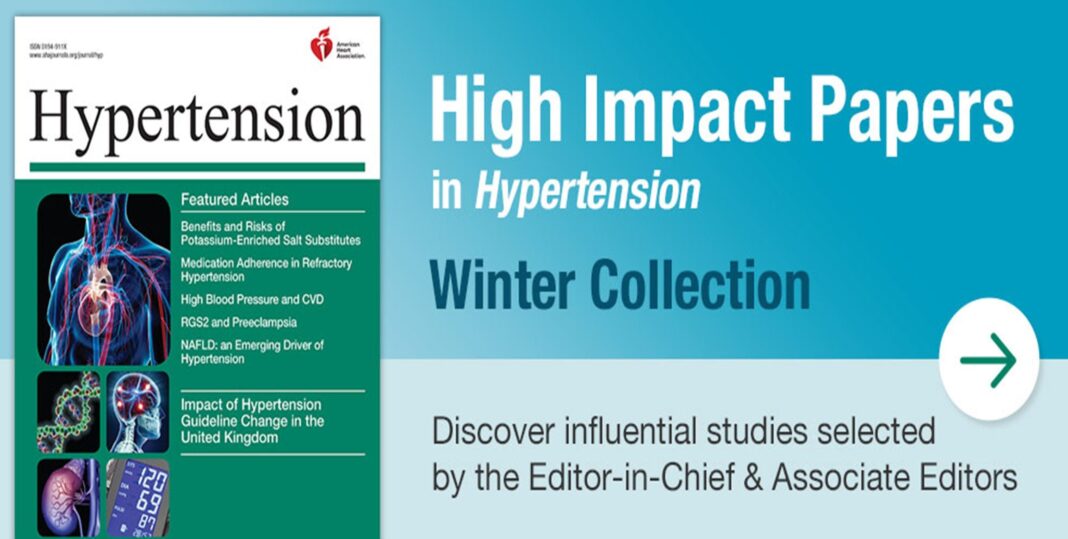Hypertension is a significant general medical issue and significant area of examination because of its high commonness and being significant danger factor for cardiovascular sicknesses and different intricacies. Destinations. To evaluate the predominance of hypertension and its related variables and to gauge mindfulness, treatment, and ampleness of control of hypertension among concentrate on subjects. Strategies and Materials. A people group based cross-sectional review with multistage examining configuration was led among metropolitan populace of Varanasi. A changed WHO STEPS talk with plan on 640 review subjects matured 25-64 years was utilized. Results. The predominance of hypertension was 32.9% (male: 40.9%, female: 26.0%). Mean systolic and diastolic BP were 124.25 ± 15.05 mmHg and 83.45 ± 9.49 mmHg, individually. Higher chances of being hypertensive were found in male subjects, oldest age bunch, wedded subjects, subjects of upper financial status, ignorant subjects, and resigned subjects. Tobacco and liquor utilization, overweight, heftiness, and stomach stoutness were additionally connected with hypertension. Out of the complete hypertensive 211 subjects, just 81 (38.4%) knew about their hypertension status; out of those, 57 (70.4%) were looking for treatment and 20 (35.08%) had their circulatory strain sufficiently controlled. End. Around 33% of the subjects were hypertensive and a big part of the review subjects were prehypertensive around here. The mindfulness, treatment, and control of hypertension were additionally exceptionally low
Presentation
Hypertension is a significant general medical condition because of its high pervasiveness from one side of the planet to the other. Around 7.5 million passings or 12.8% of the complete of all yearly passings overall happen because of hypertension. It is anticipated to be expanded to 1.56 billion grown-ups with hypertension in 2025 .
Raised circulatory strain is a significant danger factor for ongoing coronary illness, stroke, and coronary illness. Raised BP is emphatically associated to the danger of stroke and coronary illness. Other than coronary illness and stroke, its inconveniences incorporate cardiovascular breakdown, fringe vascular sickness, renal impedance, retinal drain, and visual hindrance.
Hypertension (or HTN) or hypertension is characterized as unusually high blood vessel circulatory strain. As per the Joint National Committee 7 (JNC7), ordinary circulatory strain is a systolic BP < 120 mmHg and diastolic BP < 80 mm Hg. Hypertension is characterized as systolic BP level of ≥140 mmHg as well as diastolic BP level ≥ 90 mmHg. The hazy situation falling between 120-139 mmHg systolic BP and 80-89 mmHg diastolic BP is characterized as “prehypertension” [7, 8]. Despite the fact that prehypertension is anything but an ailment in itself, prehypertensive subjects are at more danger of creating HTN.
It is a quiet executioner as seldom any indication should be visible in its beginning phases until an extreme clinical emergency happens like cardiovascular failure, stroke, or constant kidney illness [8-10]. Since individuals know nothing about extreme pulse, it is just through estimations that discovery should be possible. In spite of the fact that larger part of patients with hypertension stay asymptomatic, certain individuals with HTN report migraines, tipsiness, dizziness, adjusted vision, or swooning episode.
There are a few elements inclining toward hypertension. These variables fluctuate from one country to another and even there is distinction among metropolitan and rustic locales of a similar spot. Understanding the impact of urbanization on our aggregate wellbeing, World Health Organization has picked “Urbanization and Health” as the subject for World Health Day 2010. Urbanization is viewed as a determinant of wellbeing and one of the vital drivers of noncommunicable illnesses (NCDs), particularly in low-and center pay nations (LMICs) [14]. Metropolitan individuals are more in danger of these infections when contrasted with their country partners. According to the discoveries of National Family Health Survey (NFHS-4), the predominance of hypertension, heftiness, and blood glucose in metropolitan area of Uttar Pradesh was 10.5%, 23.9, and 9.9%, individually. Be that as it may, the pervasiveness of a similar peculiarity was 8.3%, 10.8%, and 8.2%, individually in provincial region. Obviously every one of the boundaries are having higher commonness in metropolitan region when contrasted with country region. Quick urbanization, expanding older populace, automation, inactive life, and dietary changes act all together of hazard factors which ensnares individuals in it and prompts a few ongoing illnesses. To go to compelling counteraction lengths, distinguishing proof of the danger factors is a fundamental essential. This study means to create data on predominance of hypertension and their related danger factors in metropolitan area of Varanasi. What’s more, it will likewise investigate the mindfulness and control of hypertension among the review subjects.
ALSO READ : Mental And Health Benefits Of Workout !
Materials and Methods
2.1. Concentrate on Area
Varanasi is an Indian city on the bank of Ganges in Uttar Pradesh. It has complete populace of 3676841 according to Census 2011. According to Census 2011, out of complete populace, 52% individuals live in metropolitan regions, while 48% live in the country regions. There are 90 Census specification wards in Varanasi area. Out of these 90 wards, 5 wards were chosen by utilizing basic irregular inspecting.
2.2. Concentrate on Design and Sample Size
A people group based cross-sectional review was done among individuals matured 25 to 64 years living in the chose concentrate on region. The example size for the current review was determined by taking most likely commonness of hypertension as half and reasonable mistake as 5% with 95% certainty stretch. Fixing the passable blunder as half, the base example size was determined as n = 384. Since inspecting method was multistage, subsequently considering the plan impact, the example size was additionally expanded by one and half times. Considering the nonresponse pace of 10% the last example size in study was fixed as 640. In the current review, an earlier composed informed assent was likewise taken from the members. Earlier composed informed assent was taken by the members.
2.3. Examining Methodology
A multistage examining was utilized for this review. There were three phases and for each stage different testing configuration was utilized.
Right away, out of these 90 wards, 5 wards were chosen by utilizing straightforward arbitrary inspecting. At second stage, from each chose ward the families were additionally chosen by utilizing methodical irregular inspecting and likelihood relative to measure was finished. At the third stage, one individual from target age bunch was met from chosen family. On the off chance that the chose family has more than one accessible qualified individual, one was picked arbitrarily by utilizing lottery technique. In the event of nonavailability of qualified individual in a chose family, at the hour of overview, the nearby family was chosen.
2.4. Choice of Study Subjects
2.4.1. Consideration Criteria
People matured 25-64 years in the chose concentrate on region who gave assent for cooperation were thought of.

2.4.2. Avoidance Criteria
People who can’t give reaction because of genuine physical or psychological sickness and with whom anthropometry estimations can’t be performed were barred from the review.
2.5. Instruments of the Study
Talk with plan [modified and pretested WHO stepwise way to deal with ongoing sickness hazard factor reconnaissance (STEPS)], Libra gauging machine, steel anthropometry pole, estimating tape, and Omron BP Machine were utilized.
2.6. Strategies of the Study
In all concentrate on members, an organized and pretested talk with plan was managed to get information on sociodemographic boundaries.
2.6.1. Pulse Measurement
Pulse was estimated twice on the right arm of the chose subject utilizing programmed electronic gadget (OMRON HEM-7261). The normal of two readings was utilized.
2.6.2. Anthropometric Measurements
Every one of the anthropometric estimations were finished by the accompanying normalized procedure. Weight was estimated by Libra gauging machine having a precision of 0.1 kg and stature was estimated by utilizing a steel anthropometry pole with exactness of 0.1 cm utilizing standard strategies. Weight Index was determined utilizing the accompanying equation: BMI = weight (kg)/tallness (mt)2. In view of BMI got, the subjects were grouped into various classes as per the WHO worldwide characterization [16]. Midsection perimeter (in cm) was estimated utilizing a non stretchable estimating tape. Midsection perimeter was estimated at the littlest level circumference between the costal edges and the iliac peak toward the finish of termination. Hip circuit (in cm) was estimated at the broadest piece of the hips by utilizing non stretchable estimating tape. Midriff to-hip periphery (WHR) was determined by partitioning midsection circuit by hip boundary.
2.7. Moral Consideration
Moral endorsement was gotten from the Institute Ethical Committee of the Institute of Medical Sciences, Banaras Hindu University Varanasi. Earlier composed assent was taken from the subjects who elected to take part in the review. Distinguished hypertensive subjects were alluded to the close by facility for treatment.





























